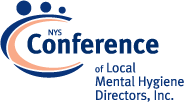States and counties will receive billions of dollars from settlements with pharmaceutical companies for their role in the opioid crisis. While there will be many competing ideas for how to allocate this money, states should not overlook a key technical intervention: using a portion of the funding to improve data sharing between states and counties. This evidence-based strategy may not grab headlines, but it could be the key to finding local solutions that reduce overdose risk, save lives and best address the crisis.
Why is data sharing critical to mitigating the overdose epidemic? To begin with, state and local leaders cannot address the crisis without first understanding the people and places within our communities being hurt by these drugs. Simply put, without this information there is no way to target resources and services where they will be most effective. The good news is that state Medicaid agencies and health departments often have data that can inform these investments, such as the number of opioid use disorder diagnoses in a jurisdiction, whether people can access effective prevention and treatment services, and where and how many health-care providers are available to provide them.
States can make many data sources available in aggregate, which complies with laws protecting patient privacy. Among those they can provide to local governments and officials tasked with overseeing settlement dollars:
• Medicaid claims data or all-payer claims databases. As the largest payer for substance use disorder treatment in the United States, Medicaid’s claims data can help states and counties understand how many people with opioid use disorder were connected to some form of treatment, received medication for the disorder and were receiving care for at least six months — metrics that can help officials understand whether the treatment system is helping people access and remain in life-saving care. Medicaid data can also help county officials understand how well hospitals are connecting people to ongoing treatment following an overdose and which primary care, licensed substance use or mental health provider organizations are treating these patients.
• Emergency department admissions data. Information about emergency department admissions can be an important tool for understanding a county’s overdose landscape. Many state health agencies track suspected overdoses in these settings. Sharing this information with counties — especially those that may not have access to a local health authority that might receive this information — could help them know where overdoses are occurring and when overdose cases are spiking.
• Prescription drug monitoring program data. PDMPs capture data on prescriptions filled for controlled substances, including buprenorphine, one of three FDA-approved medications for opioid use disorder. States set their own policies regarding access to PDMP data, so they can ensure that county officials have access to the number of providers prescribing buprenorphine and the patients filling prescriptions for it.
So how can states best share data with counties?
State leaders can invest in tools such as analytic dashboards to make data publicly accessible or available to designated users in local government. Pennsylvania and Michigan, for example, have created public-facing dashboards. Pennsylvania’s opioid dashboard allows users to filter many of the data points by county, and much of the underlying data is available for download at the county level. Similarly, Michigan’s Overdose Data to Action Dashboard offers information on county-level demographics, harm reduction services, use of medication to treat opioid use disorder and overdose vulnerability. Though neither state offers subcounty geographic or provider-level information, they exemplify the types of data that should be made available for local overdose prevention planning.
Michigan is also working to address overdose deaths by sharing data through its MiCelerity system, an automated, real-time surveillance tool designed to collect information regarding fatal and nonfatal drug poisoning events in the state. MiCelerity also offers detailed information about county residents who were admitted, discharged or transferred from hospital emergency departments with a drug poisoning-related code and who appear in the state’s electronic death reporting system. To protect patient privacy, only local staff who need the data are approved to access it.
Even before the opioid settlements, data sharing was a core tenet of state health agencies, one that helped them track public health threats. Now, with opioid settlement funds, states have an opportunity to share data with and provide effective tools to counties so they can better understand the scope of the opioid overdose crisis in their jurisdictions and allocate resources effectively. Doing so will save lives
NYS Conference of Local Mental Hygiene Directors, Inc. | An Affiliate of the New York State Association of Counties >
Hot Topics / Priority Issues
WEDNESDAY, JUN 28, 2023
A Key Intervention in the Opioid Crisis: Data Sharing
States have information that counties need to better target their resources and services to reduce overdose risk and save lives. Improving data sharing is a good use of opioid settlement funds.

Michigan’s Overdose Data to Action Dashboard is a public-facing online tool providing county-level information on a variety of metrics. (Michigan.gov)



